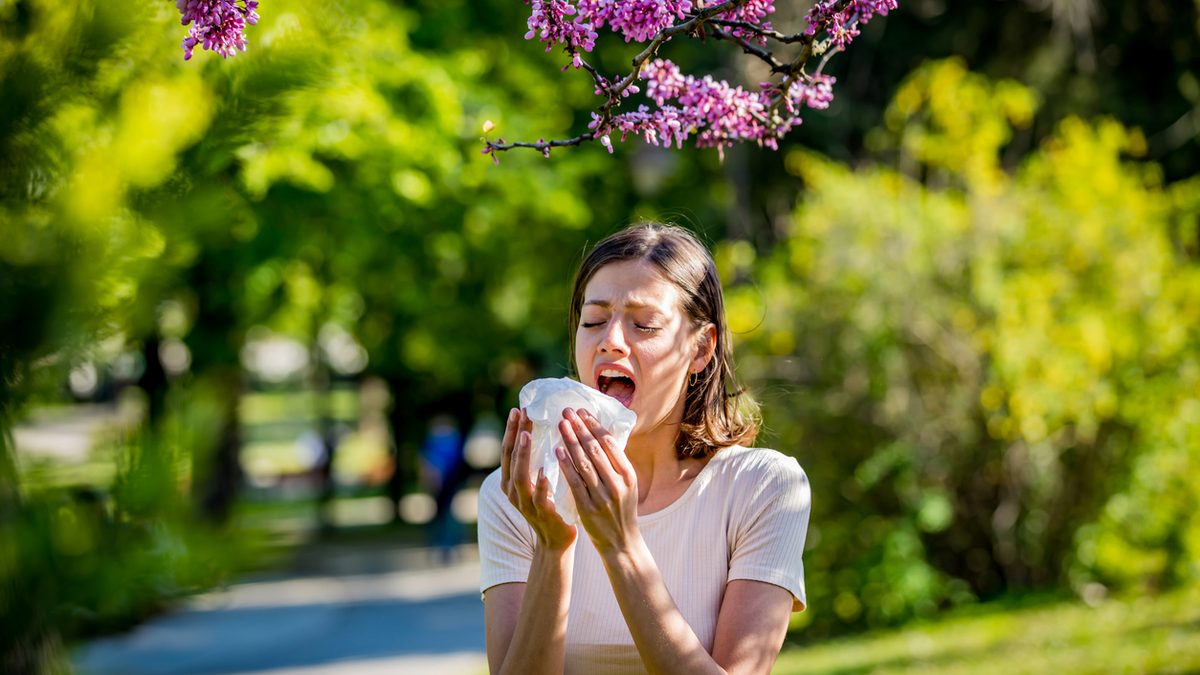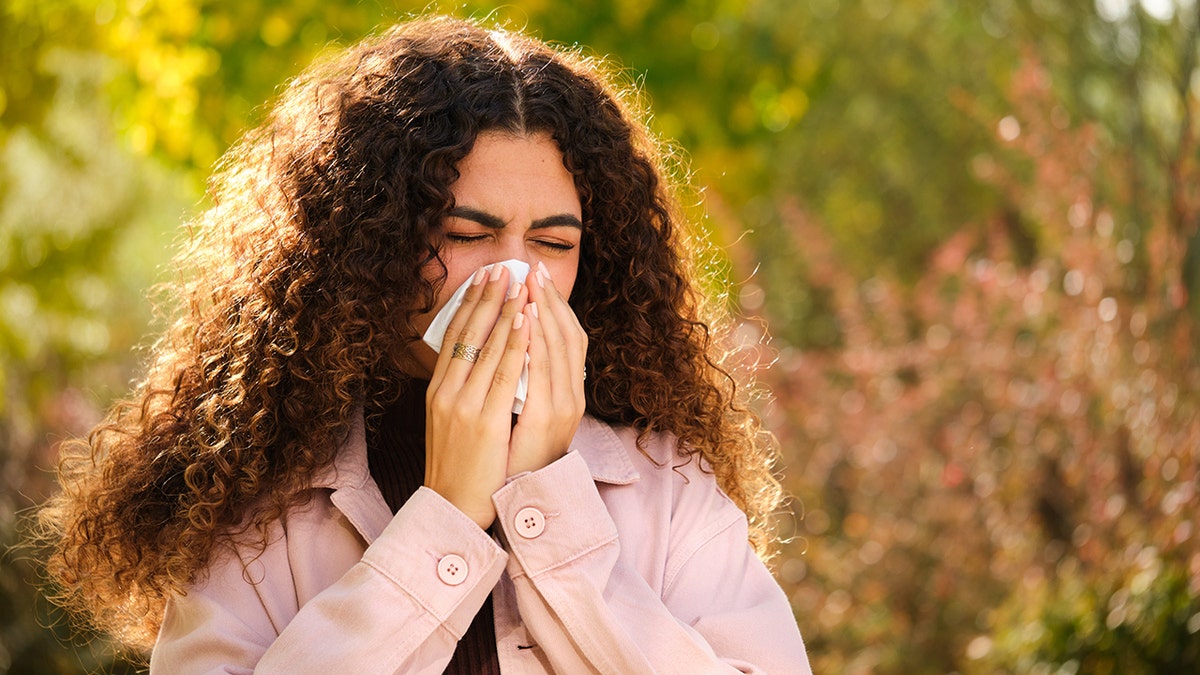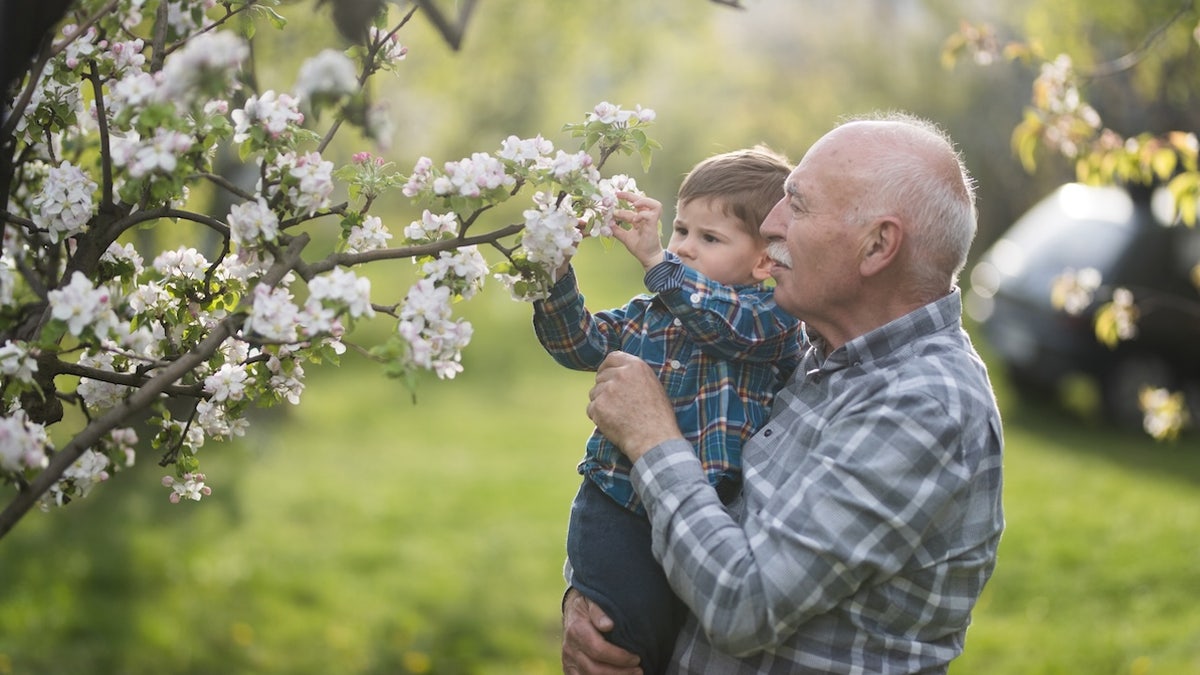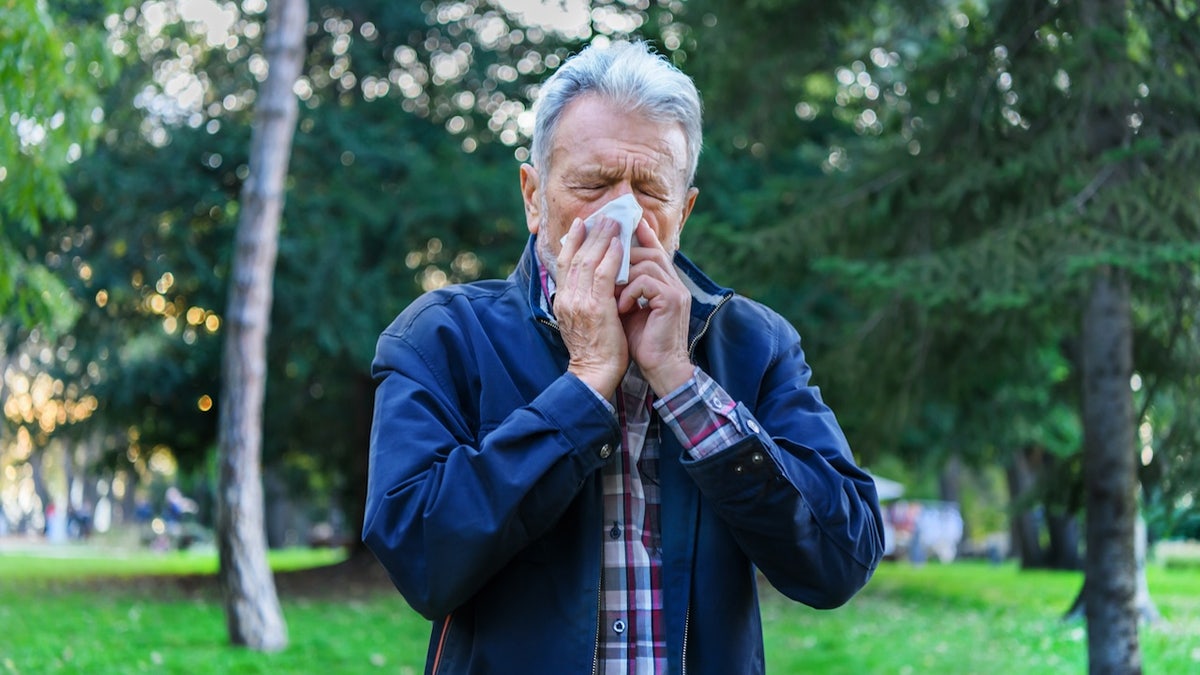The allergies season comes to us and is provoking some of the worst cases.
“Changes in temperature and precipitation patterns allow plants and trees to grow in places that did not do so before,” according to the American Lung Association, which means an increase in pollen count and even new types of pollen.
The Asthma and Allergy Foundation of America (AAFA) recently published its annual report of allergies, which identifies the “most challenging cities” for those who live with seasonal allergies.
19 medicine approvals by 2024 that had a “great clinical impact” according to Goodrx
The report focuses on the counts of trees, herbs and herbs throughout the year, as well as the use of free -sales allergies and the availability of allergists and immunologists certified by the Board.
This year’s report called Wichita, Kansas, as a maximum allergy capital for the third consecutive year, largely due to its tree worse than average and grass pollen. (Istock)
The 2025 report called Wichita, Kansas, as the largest allergies capital of the third consecutive year, largely due to its tree worse than average and grass pollen.
10 main capitals of allergy
- Wichita, Kansas
- New Orleans, Louisiana
- Oklahoma City, Oklahoma
- Tulle, oklahoma
- Memphis, Tennessee
- Little Rock, Arkansas
- Raleigh, North Carolina
- Richmond, Virginia
- Greenville, South Carolina
- Greensboro, North Carolina
Honey and Ally Relief: Really these two go together?
New types of pollen (and larger amounts) can trigger Symptoms of allergy For people, even if they did not suffer before.

According to the American Lung Association, “changes in temperature and precipitation patterns allow you to grow plants and trees in places than before.” (Istock)
Dr. Purvi Parikh, who specializes in allergy and immunology of infectious diseases in Nyu Langone, spoke with Fox News Digital about the best ways to maintain allergies as the seasons change.
1. Keep -you head at the head of the medicine
For those who suffer from seasonal allergies, Parikh recommends starting medicines early.
“One of the most important things we recommend is to use a 24 -hour antihistamine because they have more time and can help control the symptoms,” Fox News Digital told.
Eye drops and antihistamine nasal sprays can also help with itchy eyes and stuffed noses, respectively.
Study of the risk of death by heart disease that collect common domestic products
“The other important thing that must be remembered with without prescription drugs is that if you have respiratory problems, such as cough, sibilancies or breast tension, they are all signs that you could have asthma,” said Parikh.
In this case, he recommends seeing a medical professional to ensure that you use the right medication.

“One of the most important things we recommend is to use a 24 -hour antihistamine because they have a longer performance and can really help control the symptoms,” an expert advised. (Getty’s pictures)
2. Wash -you clothes
When you go inside after passing time outdoors, Parikh recommends changing clothes and showering -to wash any pollen and decrease exposure.
Click here to get the Fox News app
According to experts, sheets was washing once a week in warm water can also help limit exposure to allergens.
3. Fix -you in time
As the pollen count is the highest in the mornings, Parikh said it is best to stay inside the day.
“Keep your windows closed early in the morning for the same reason,” he advised.
9 on the counter remedies to help -you fight allergies in spring
The pollen count increases again in the afternoon and in the early hours of the evening.
Different plants and trees release the pollen at different times, so that the symptoms can vary depending on the place where you live, according to the AAFA.

Different plants and trees release pollen at different times, so that symptoms can vary depending on where they live. (Istock)
Trees generally produce more pollen from February to April.
In some southern states, however, allergens can begin to produce since December or January and the peak several times during the year, declared the same source.
4. Look for attention as required
Although the noses and dry eyes are usually caused by allergies, Parikh said that other factors could be at stake.
Click here to register -you are in our health newsletter
“”Colds and viruses And allergies can have many identical symptoms, “Fox News Digital told Fox.
“Allergies usually last longer … so if you feel that you are sick throughout the month of April and May … it can be more likely to be allergies.”
For more health items, visit www.foxnews.com/health
Those who are not sure if their symptoms are due to allergies or illnesses must consult a doctor, he advised Parikh.
#U.S #allergy #capitals #tips #managing #symptoms
Image Source : www.foxnews.com
